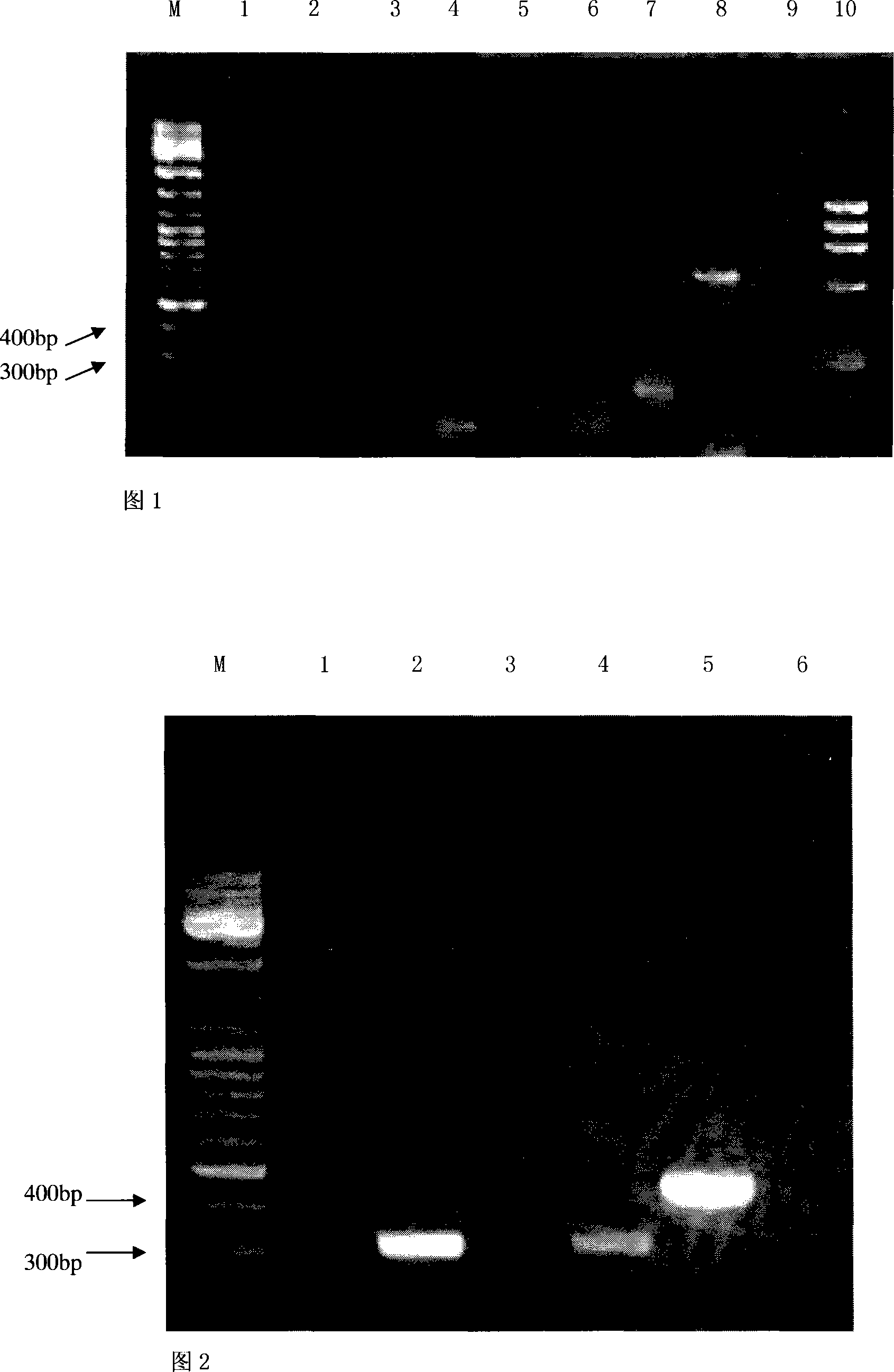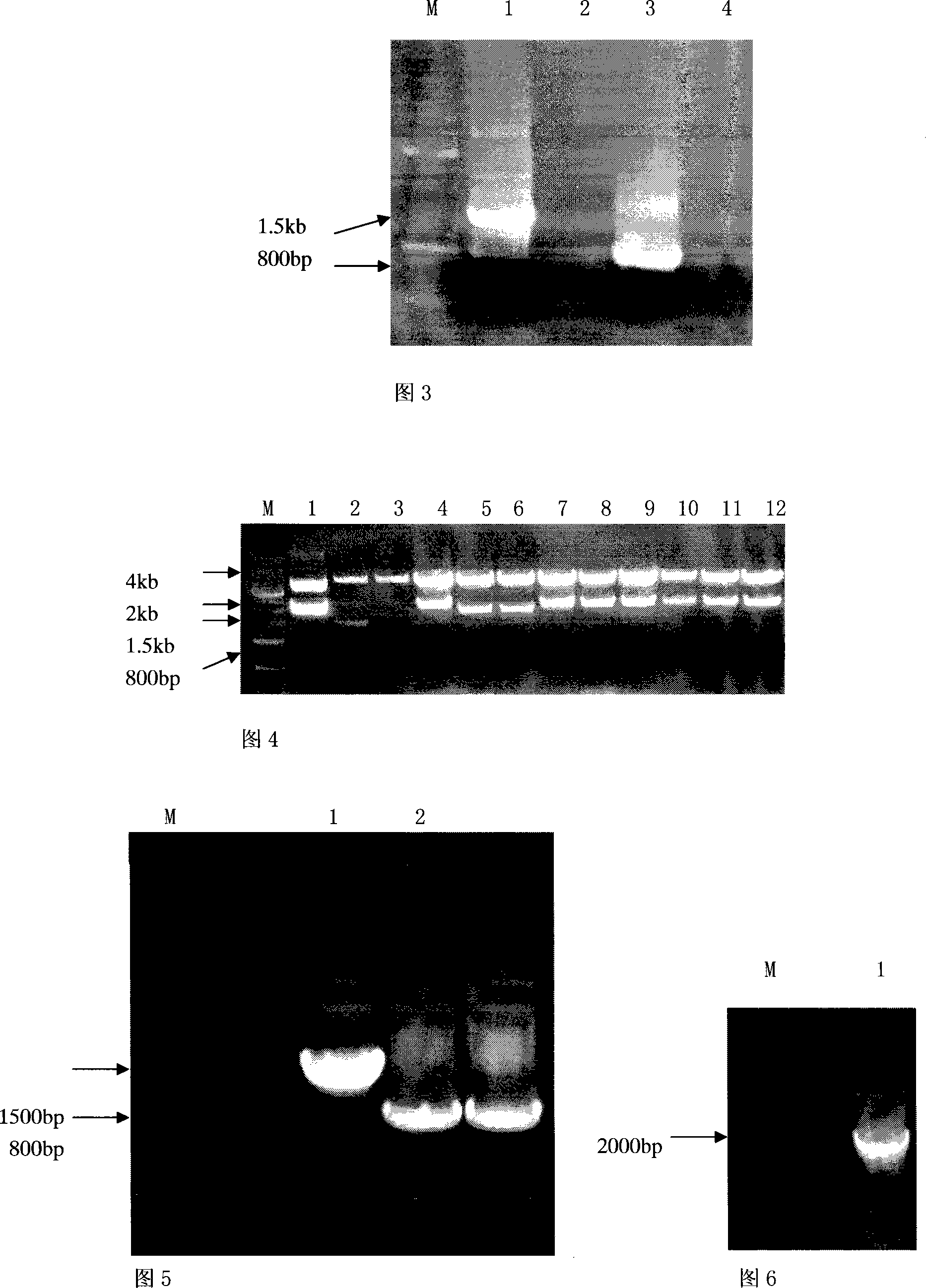Gene of containing 26S rRNA sequence from restoring line of cotton
A DNA sequence and sequence technology, applied in the field of new genes, can solve problems such as no research reports on the cloned cotton fertility restoration gene, etc.
- Summary
- Abstract
- Description
- Claims
- Application Information
AI Technical Summary
Problems solved by technology
Method used
Image
Examples
Embodiment 1
[0020] Obtaining Gene Segments from Cotton Restorer Lines by Suppression Subtractive Hybridization
[0021] 1 Cultivation and selection of cotton materials for inhibiting subtractive hybridization: The cotton variety is the Y18R×P30A hybrid F1 generation self-crossing F2 generation material cultivated by Guo Sandui's research group at the Institute of Biotechnology, Chinese Academy of Agricultural Sciences. The fertility of the F1 generation selfed materials was judged according to the morphology of the stamens after sowing, and then the young buds of the fertile and sterile materials that had budded for 3 to 5 days were picked respectively. The bract leaves were cut off with a scalpel, and the young buds were quick-frozen in liquid nitrogen and stored at -70°C.
[0022] 2 Preparation of RNA: The improved thermal boric acid method was used to extract the total RNA of the upland cotton variety Y18R×P30A hybrid F1 self-bred F2 material, which was 3 to 5 days old buds, and was us...
Embodiment 2
[0026] Acquisition of Full-length cDNA Sequence of Gene GH18Rorf392 from Cotton Restorer Line
[0027]1 Obtaining cDNA from the 5' end of the cotton restorer line GH18Rorf392 gene When using the SSH fragment and the GeneRacerTMRNA Oligo sequence to form a primer pair for 5' RACE of cotton fertility restoration related genes, it was amplified from the total RNA of fertile buds of cotton F2 generation to A specific band of 1500bp (Figure 3). Cut the film containing the band with a razor blade and transfer the film to S.N.A.P. TM In the column, centrifuge through the column to obtain the fragment. The fragment was gently mixed with the pCR4-TOPO vector, incubated at room temperature for connection, transformed into Escherichia coli DH5α-T1 competent cells, and screened with 50 μg / mL kana. The obtained transformants were identified by double enzyme digestion with Pst I and Not I, and the 1500 bp band was indeed inserted (Fig. 4). After sequencing, the 5' end cDNA sequence of GH...
Embodiment 3
[0031] PCR by designing primers, recovering amplified fragments, reamplification, electrophoresis recovery, ligation and transformation to obtain complete full-length gene sequences
[0032] 1 Design primers for PCR: In Example 2, the vectors containing the 5' and 3' cDNA sequences of the GH18Rorf392 gene were obtained by RACE at the 5' and 3' ends respectively, in order to obtain the vector containing the complete full-length cDNA sequence of the GH18Rorf392 gene , so design a pair of primers: 5'-end forward splicing and 5'-end reverse splicing, where the first half sequence of the 5'-end reverse splicing primer is the sequence unique to the end of the 5' insert of pCR4-TOPO-GH18Rorf392, 5' The second half of the reverse splicing primer is the sequence unique to the front end of the pCR4-TOPO-GH18Rorf392 3' insert. At the same time, another pair of primers were designed: forward splicing at the 3' end and reverse splicing at the 3' end. The second half sequence of the splici...
PUM
 Login to View More
Login to View More Abstract
Description
Claims
Application Information
 Login to View More
Login to View More - R&D
- Intellectual Property
- Life Sciences
- Materials
- Tech Scout
- Unparalleled Data Quality
- Higher Quality Content
- 60% Fewer Hallucinations
Browse by: Latest US Patents, China's latest patents, Technical Efficacy Thesaurus, Application Domain, Technology Topic, Popular Technical Reports.
© 2025 PatSnap. All rights reserved.Legal|Privacy policy|Modern Slavery Act Transparency Statement|Sitemap|About US| Contact US: help@patsnap.com


